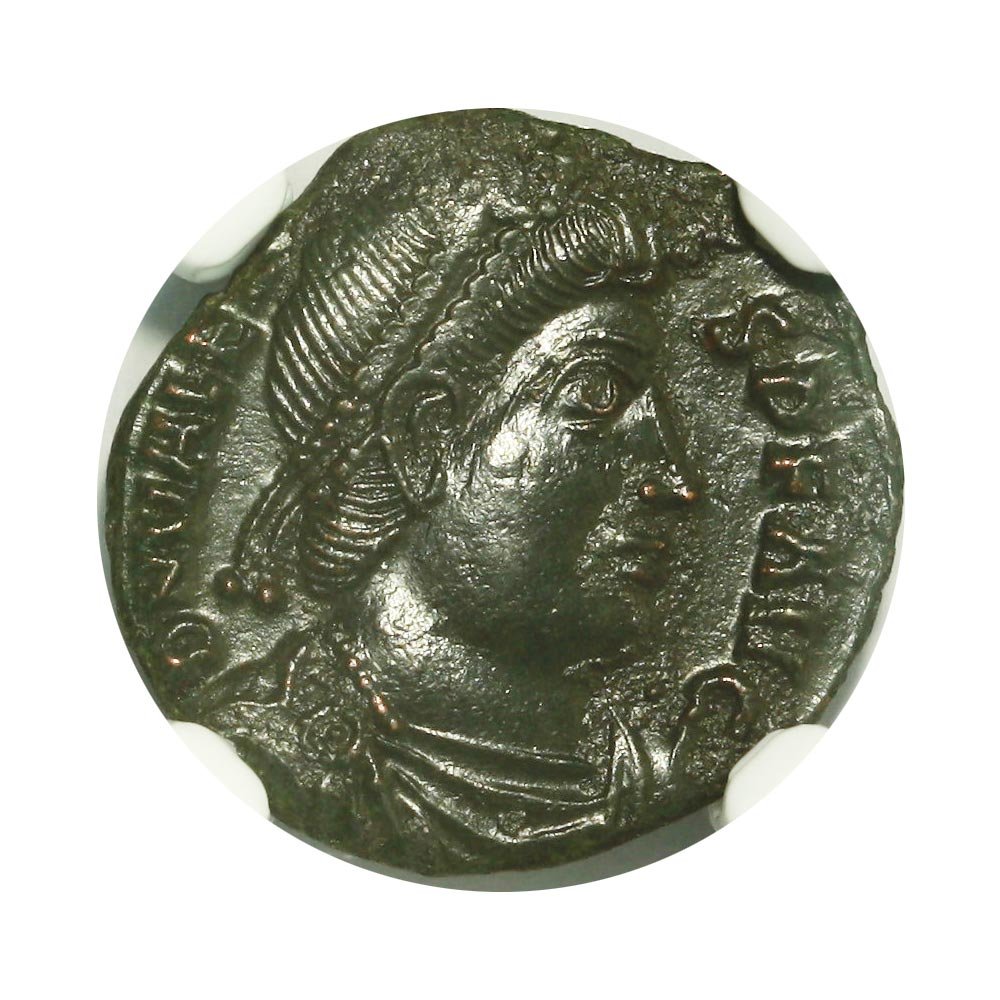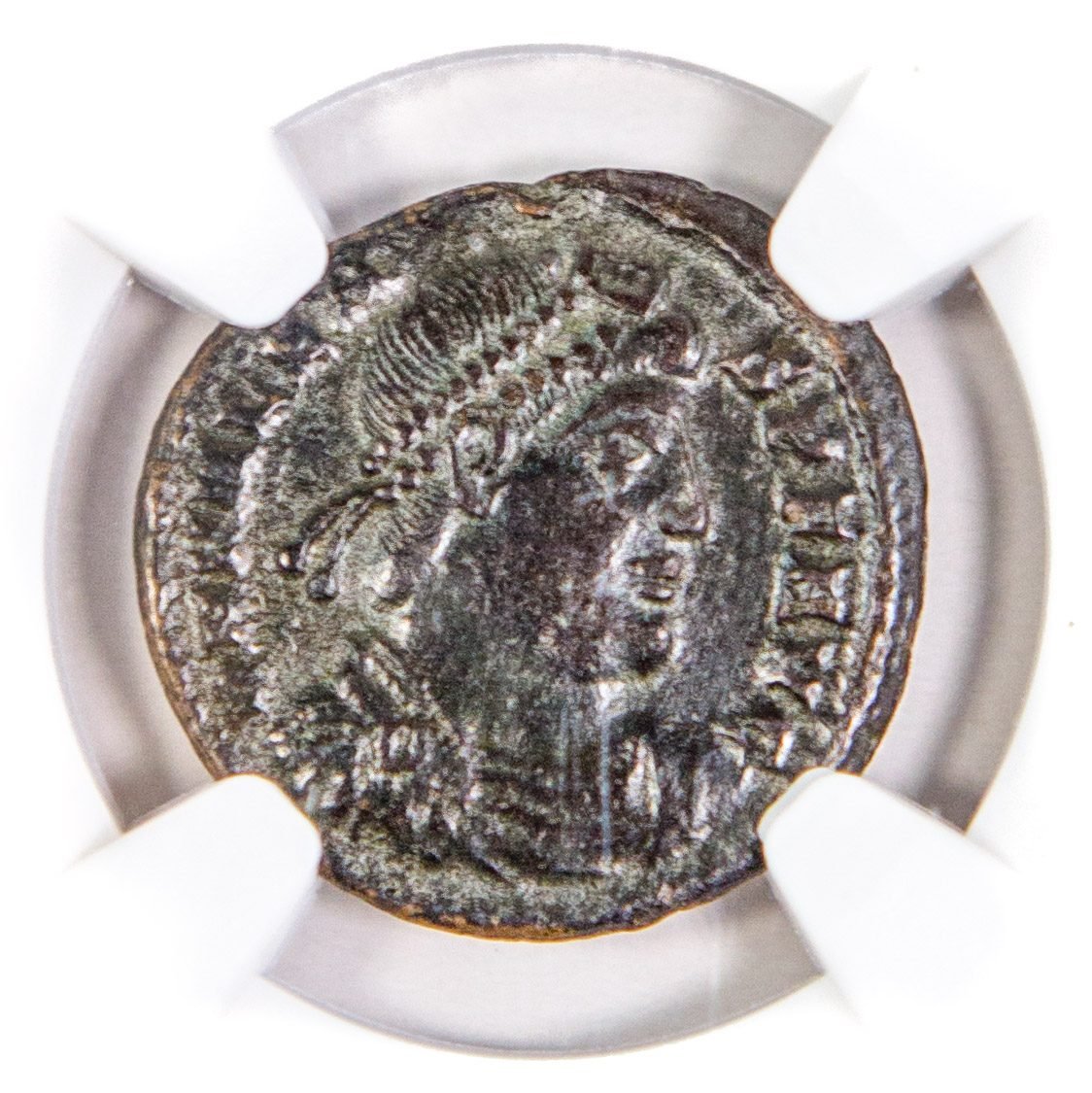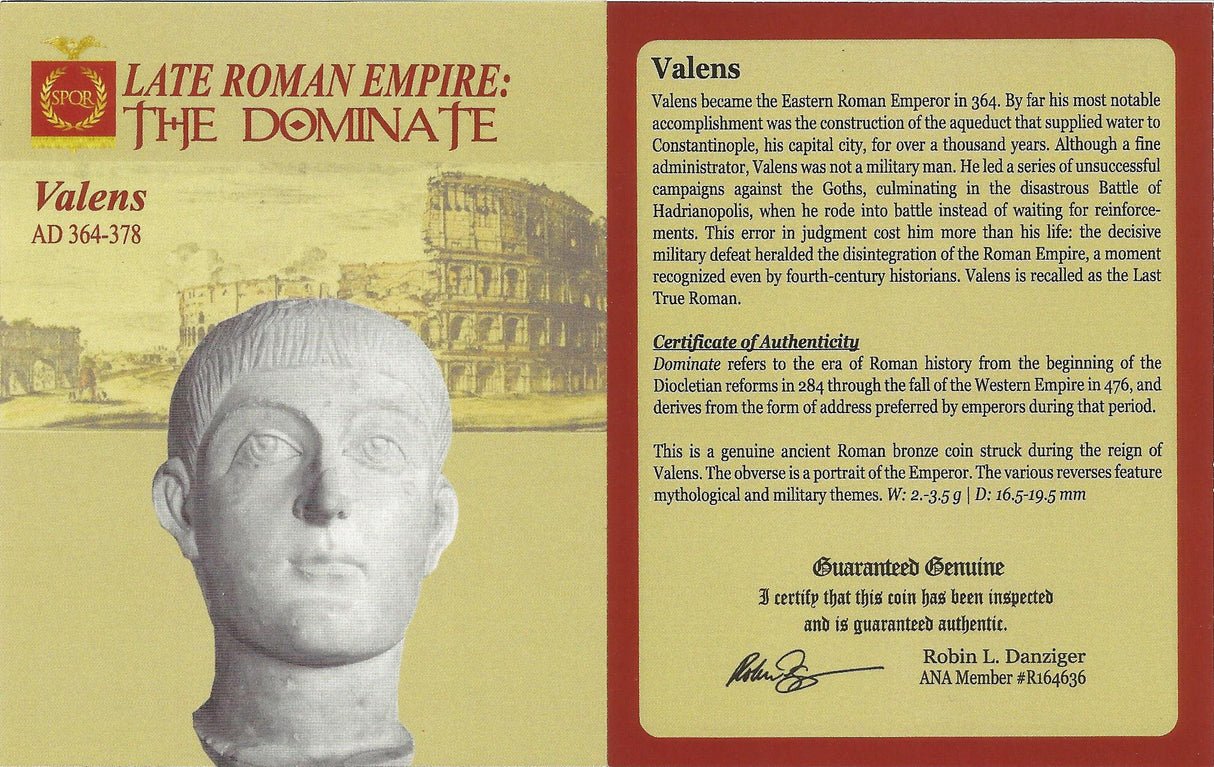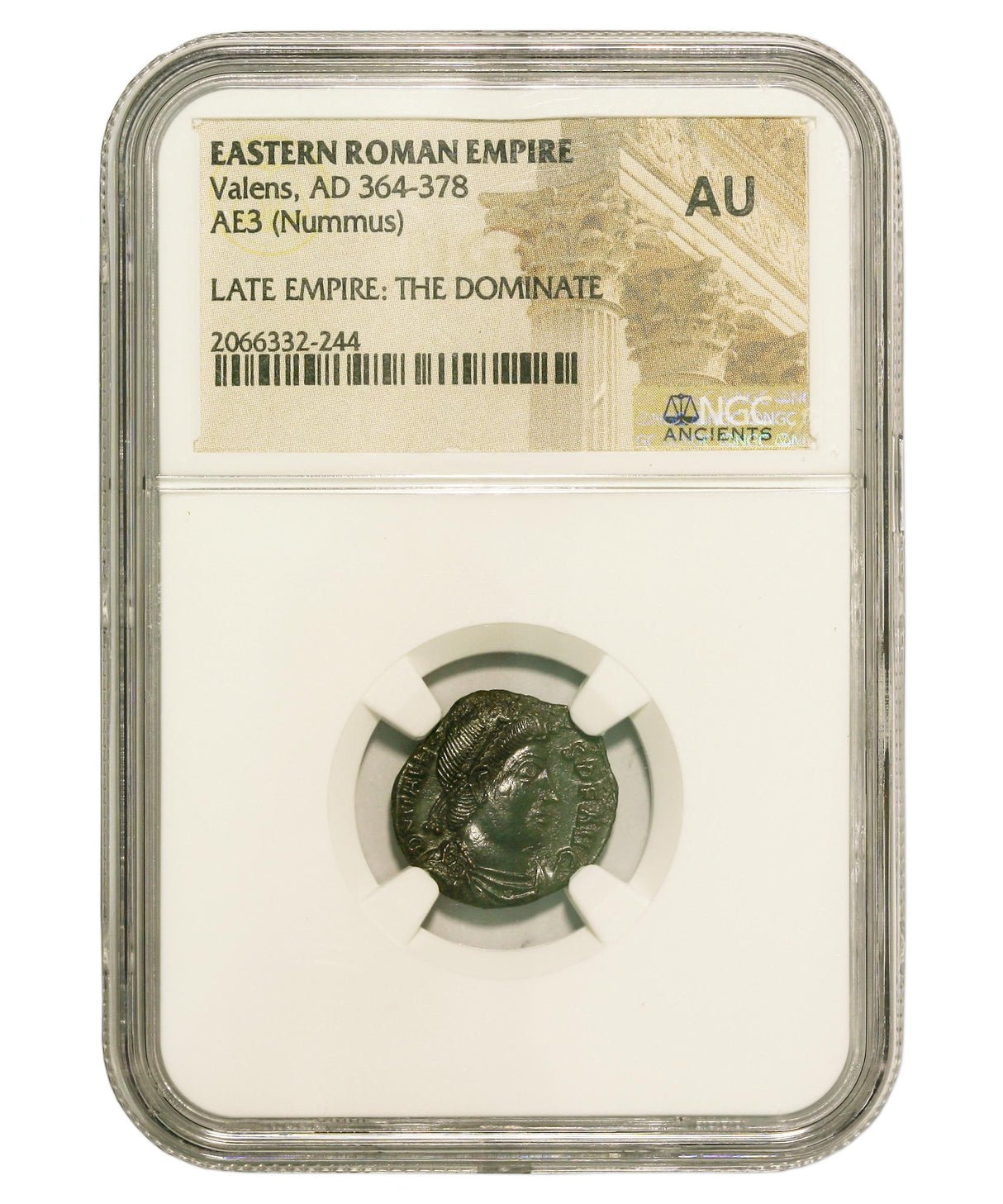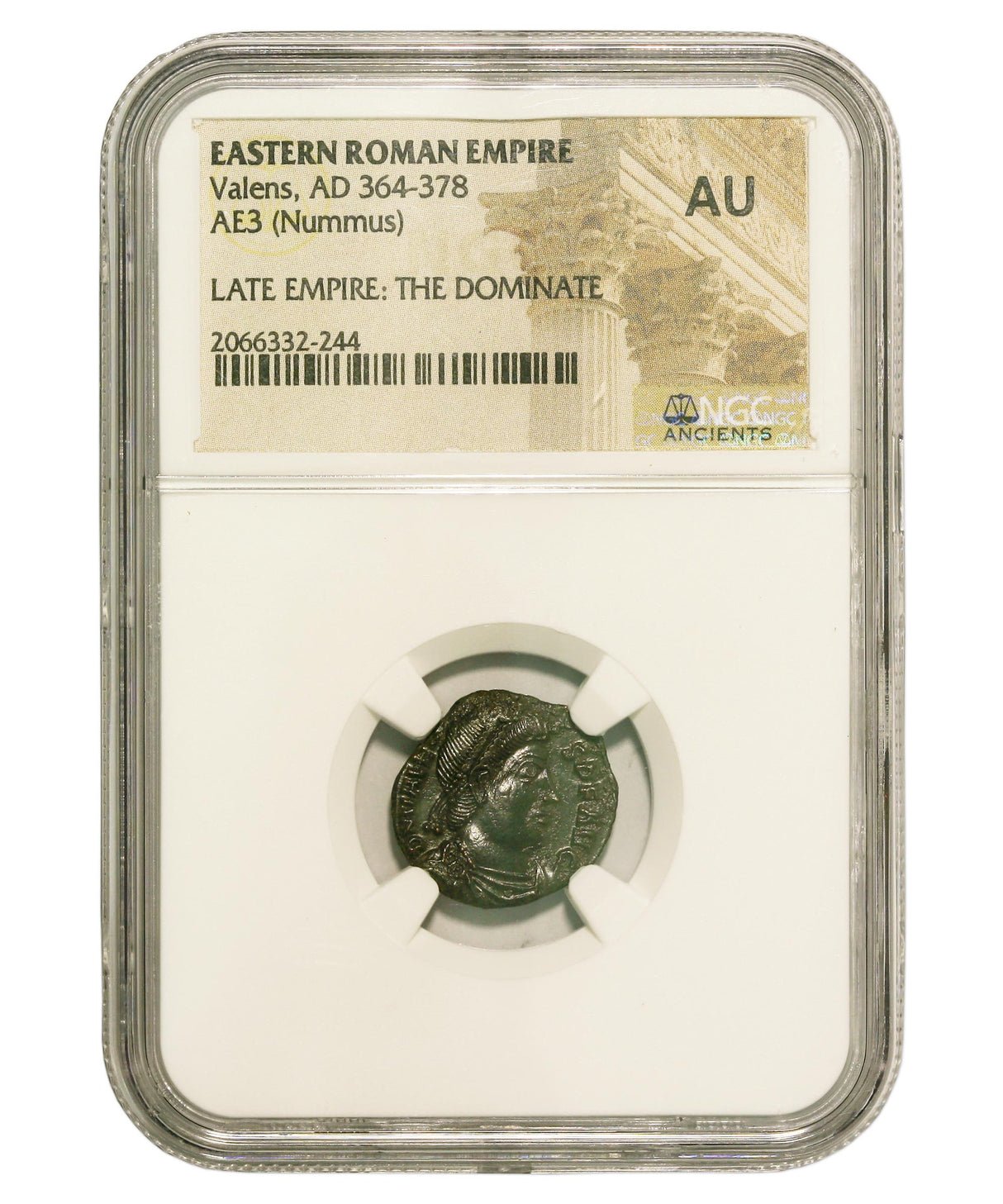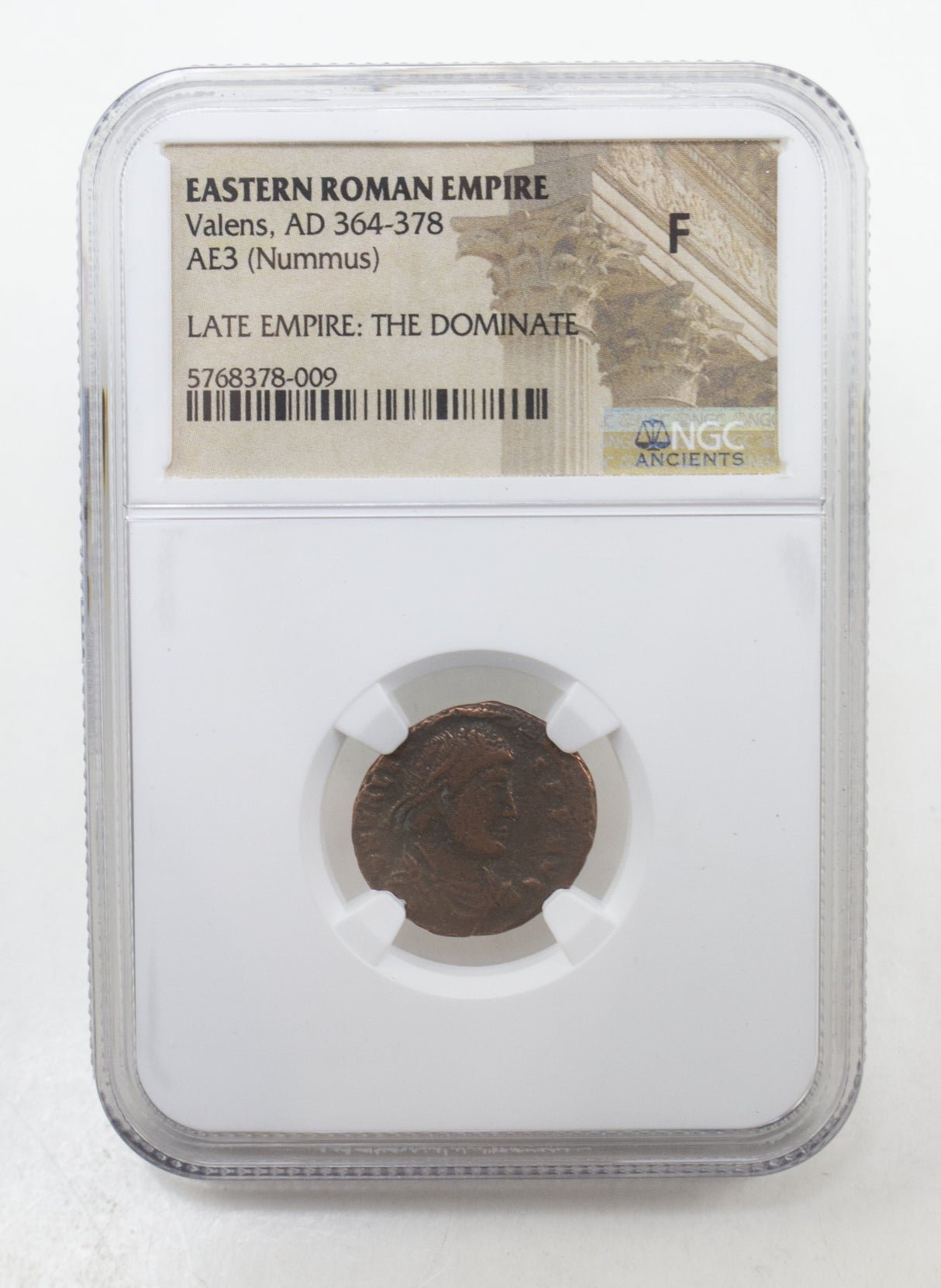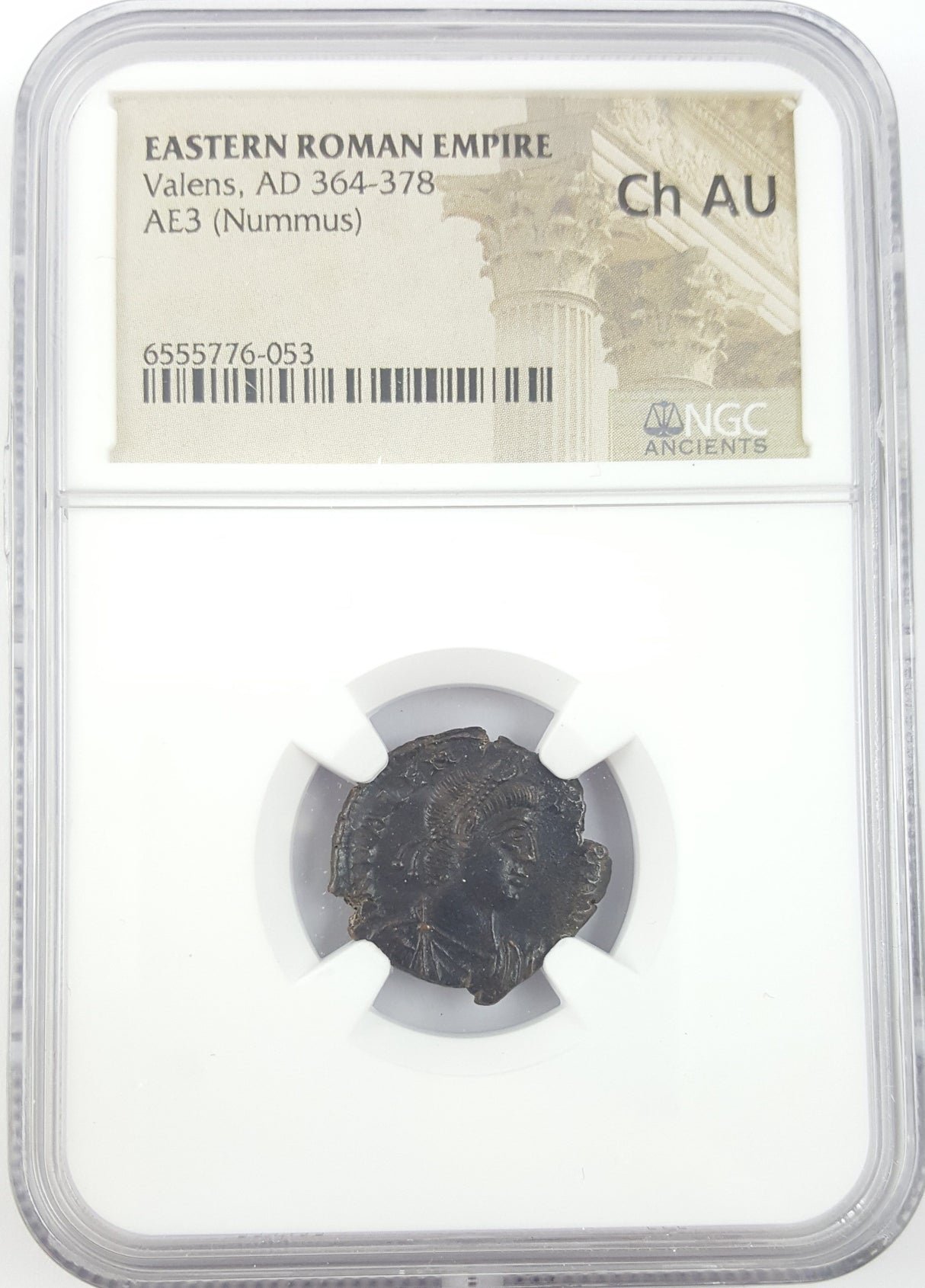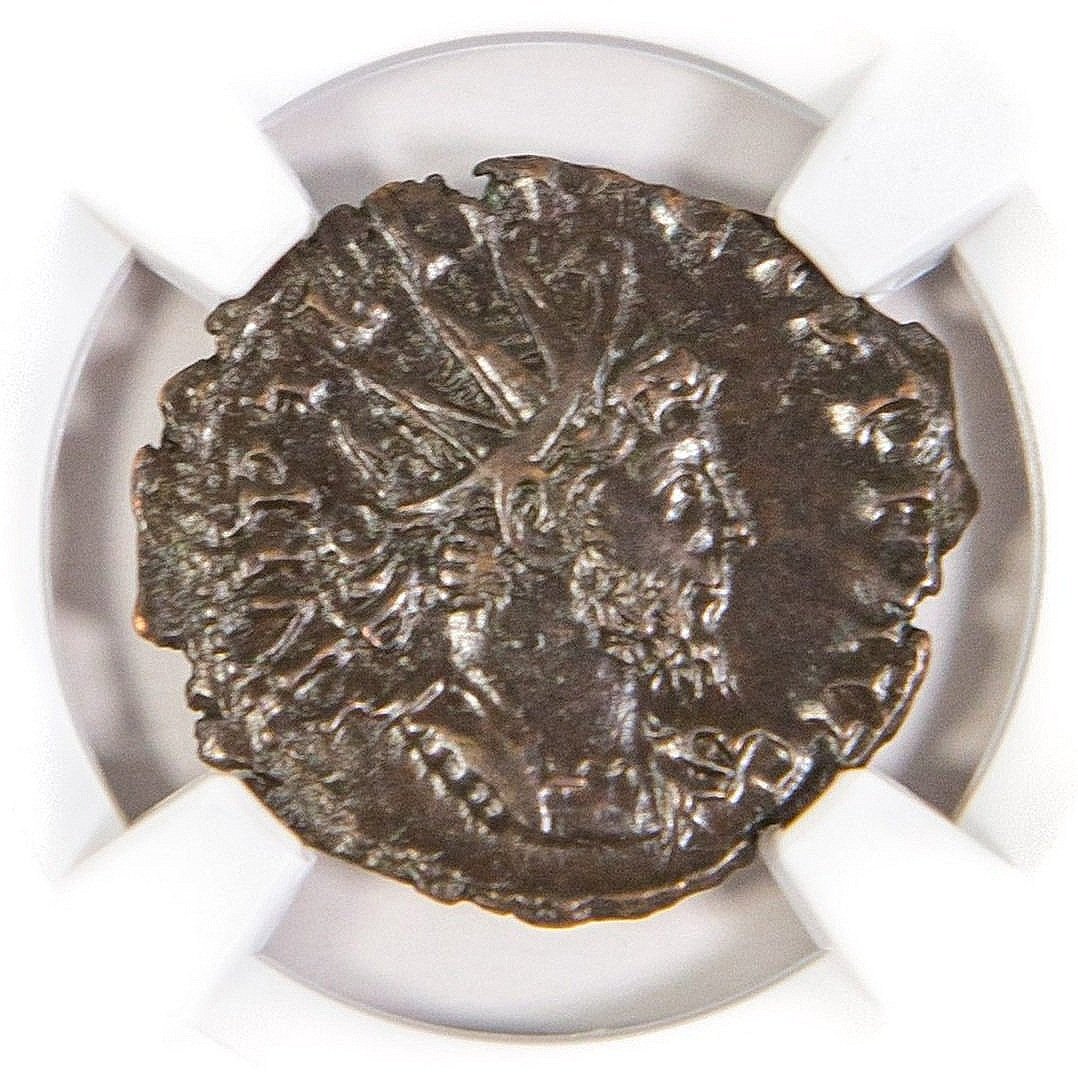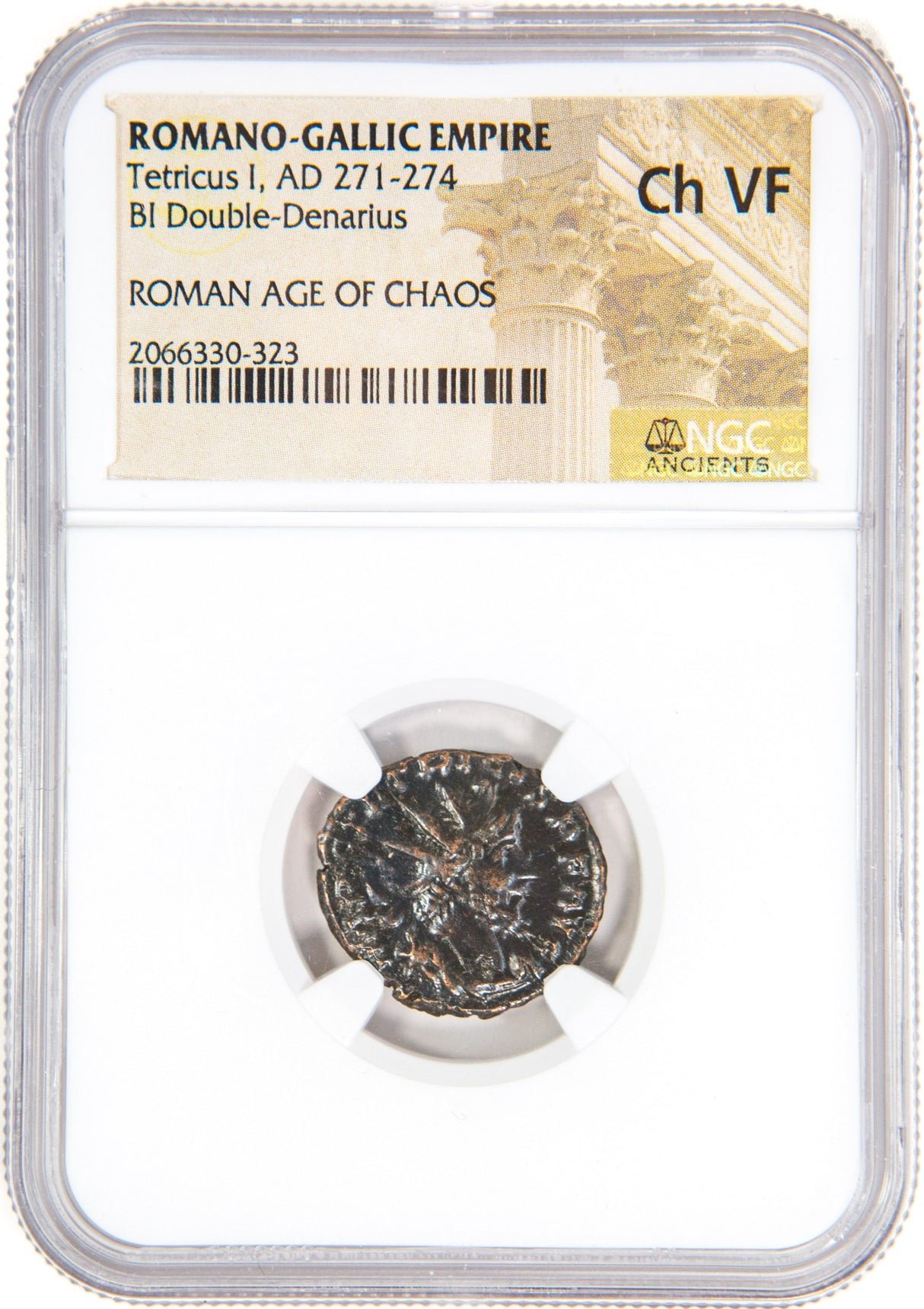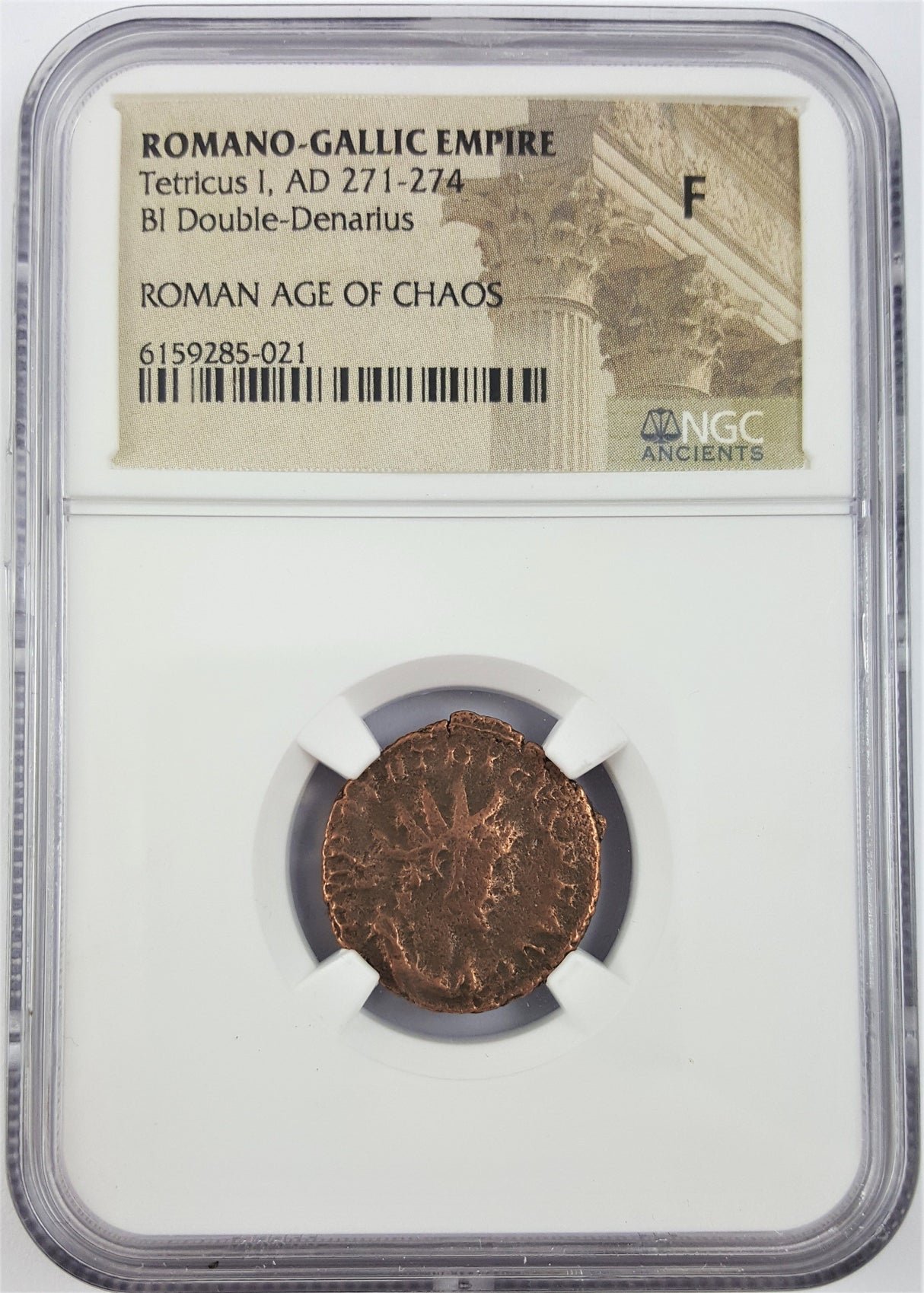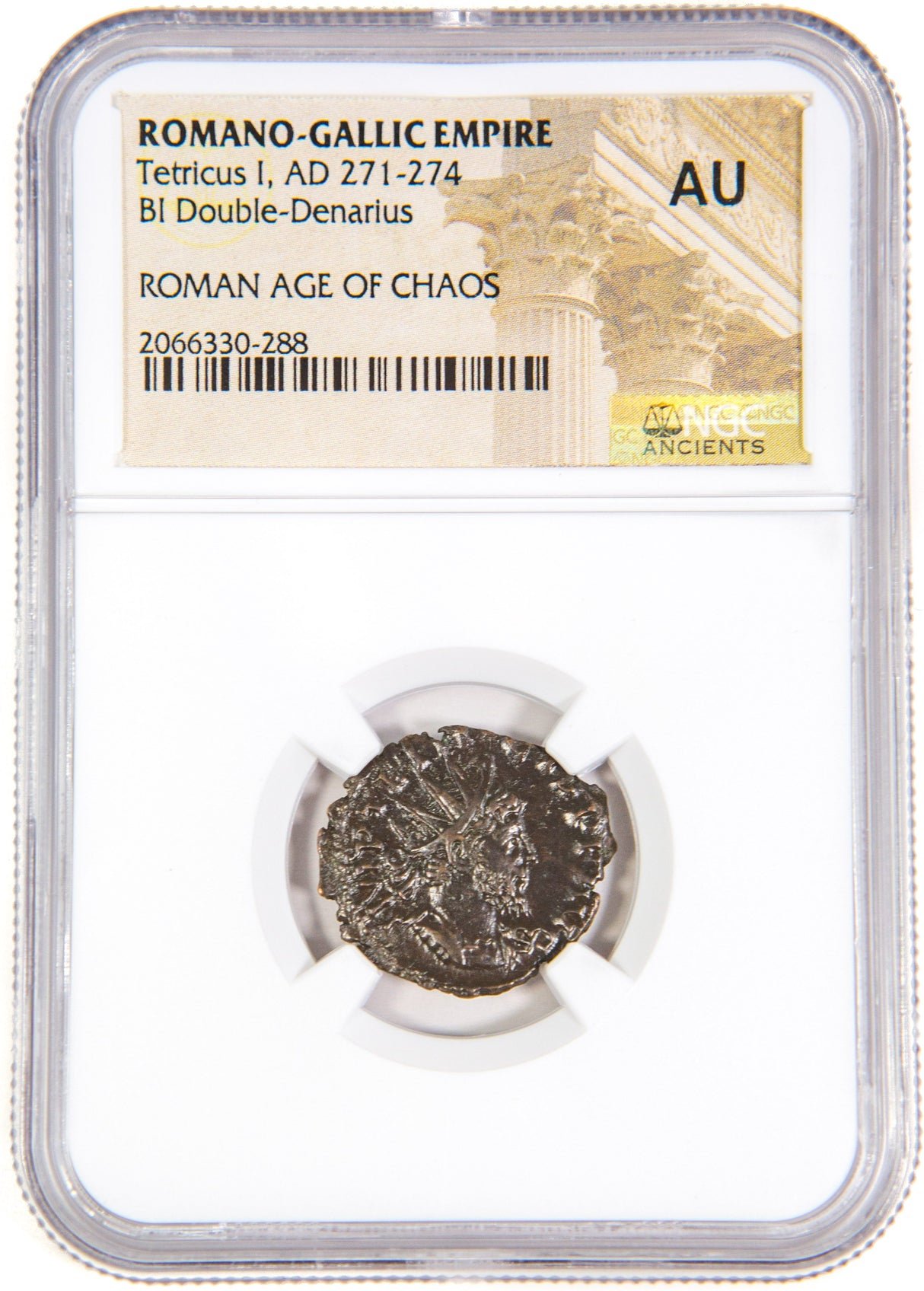Roman Dupondius of Emperor Trajan featuring Trajan's Column (about 1910 years ago)
This bronze dupondius coin was minted between 112-114 AD during the reign of Emperor Trajan (Roman Empire).
Front Side: Features the radiate bust of Emperor Trajan facing right with the inscription "IMP CAES NERVAE TRAIANO AVG GER DAC P M TR P COS VI P P" (titles and honors of Emperor Trajan)
Back Side: Depicts Trajan's Column in Rome with a statue of Caesar on top and two eagles at the base, with the inscription "S P Q R OPTIMO PRINCIPI" (The Senate and People of Rome to the Best of Princes) and "S - C" (Senatus Consulto, by decree of the Senate)
Technical Details: Weight: 12.70 grams Condition: VF (Very Fine) Patina: Nice dark glossy green References: RIC 603; C. 563; BMC 993; Strack 433; BN 774; Bauten S. 30 f.; Hill, Monuments S. 57 f.
Historical Significance: Trajan's Column, depicted on this coin, still stands today in Rome's Forum. This remarkable monument was constructed to commemorate Emperor Trajan's victories in the Dacian Wars (101-102 and 105-106 AD). The column features a continuous spiral relief that tells the story of these military campaigns in remarkable detail. As one of ancient Rome's most important architectural achievements, its appearance on this coin demonstrates how the emperor used coinage to publicize his major building projects and military accomplishments to citizens throughout the empire.
This bronze dupondius coin was minted between 112-114 AD during the reign of Emperor Trajan (Roman Empire).
Front Side: Features the radiate bust of Emperor Trajan facing right with the inscription "IMP CAES NERVAE TRAIANO AVG GER DAC P M TR P COS VI P P" (titles and honors of Emperor Trajan)
Back Side: Depicts Trajan's Column in Rome with a statue of Caesar on top and two eagles at the base, with the inscription "S P Q R OPTIMO PRINCIPI" (The Senate and People of Rome to the Best of Princes) and "S - C" (Senatus Consulto, by decree of the Senate)
Technical Details: Weight: 12.70 grams Condition: VF (Very Fine) Patina: Nice dark glossy green References: RIC 603; C. 563; BMC 993; Strack 433; BN 774; Bauten S. 30 f.; Hill, Monuments S. 57 f.
Historical Significance: Trajan's Column, depicted on this coin, still stands today in Rome's Forum. This remarkable monument was constructed to commemorate Emperor Trajan's victories in the Dacian Wars (101-102 and 105-106 AD). The column features a continuous spiral relief that tells the story of these military campaigns in remarkable detail. As one of ancient Rome's most important architectural achievements, its appearance on this coin demonstrates how the emperor used coinage to publicize his major building projects and military accomplishments to citizens throughout the empire.
This bronze dupondius coin was minted between 112-114 AD during the reign of Emperor Trajan (Roman Empire).
Front Side: Features the radiate bust of Emperor Trajan facing right with the inscription "IMP CAES NERVAE TRAIANO AVG GER DAC P M TR P COS VI P P" (titles and honors of Emperor Trajan)
Back Side: Depicts Trajan's Column in Rome with a statue of Caesar on top and two eagles at the base, with the inscription "S P Q R OPTIMO PRINCIPI" (The Senate and People of Rome to the Best of Princes) and "S - C" (Senatus Consulto, by decree of the Senate)
Technical Details: Weight: 12.70 grams Condition: VF (Very Fine) Patina: Nice dark glossy green References: RIC 603; C. 563; BMC 993; Strack 433; BN 774; Bauten S. 30 f.; Hill, Monuments S. 57 f.
Historical Significance: Trajan's Column, depicted on this coin, still stands today in Rome's Forum. This remarkable monument was constructed to commemorate Emperor Trajan's victories in the Dacian Wars (101-102 and 105-106 AD). The column features a continuous spiral relief that tells the story of these military campaigns in remarkable detail. As one of ancient Rome's most important architectural achievements, its appearance on this coin demonstrates how the emperor used coinage to publicize his major building projects and military accomplishments to citizens throughout the empire.

















